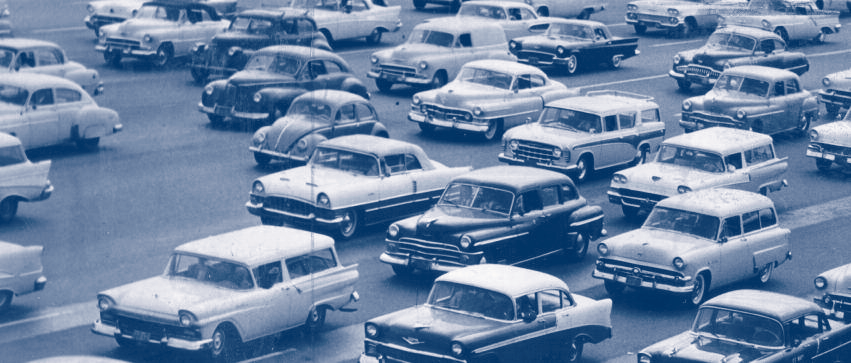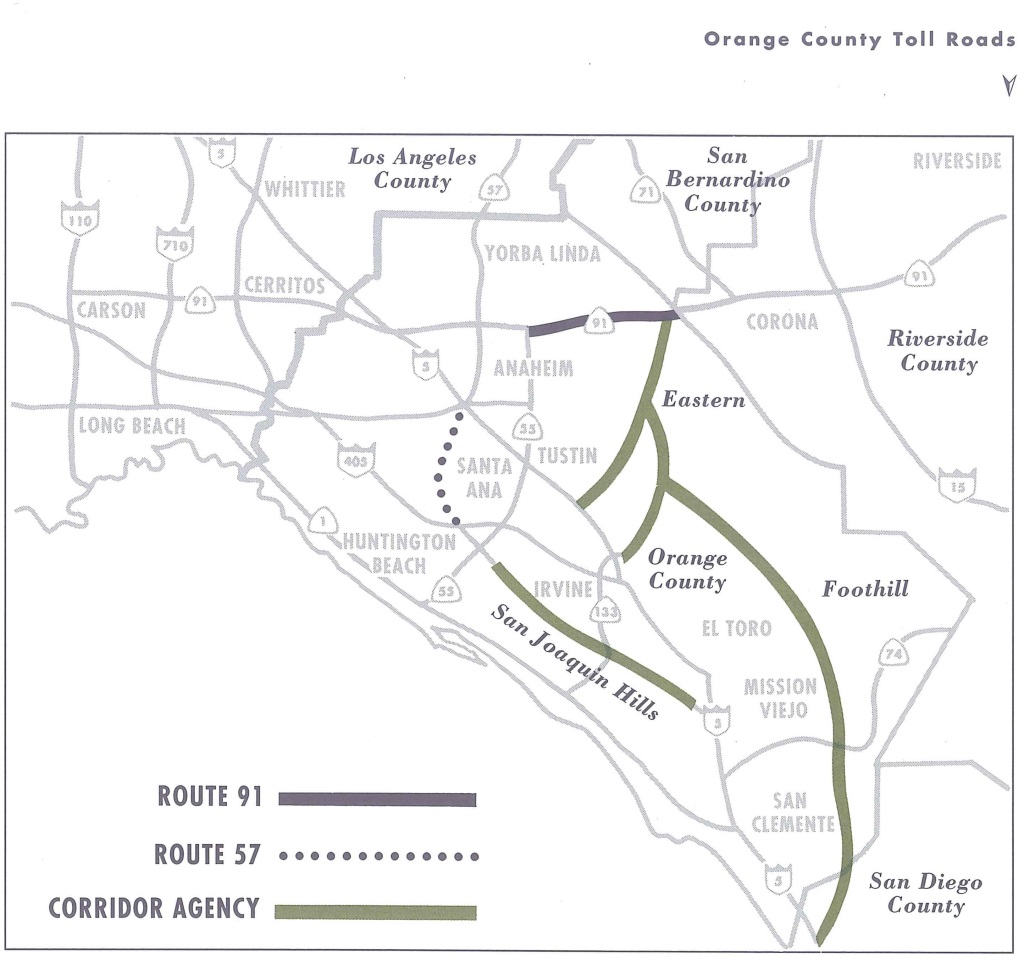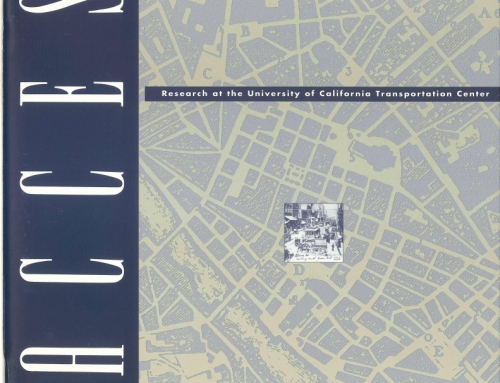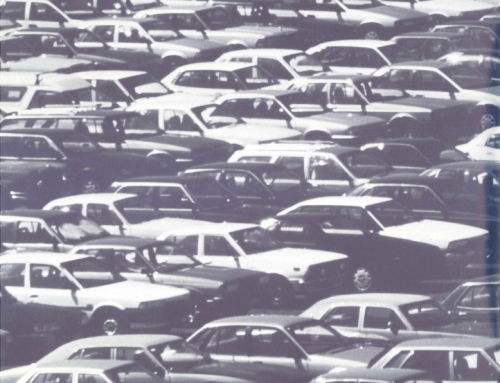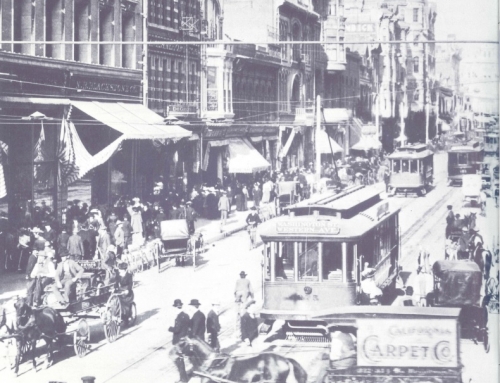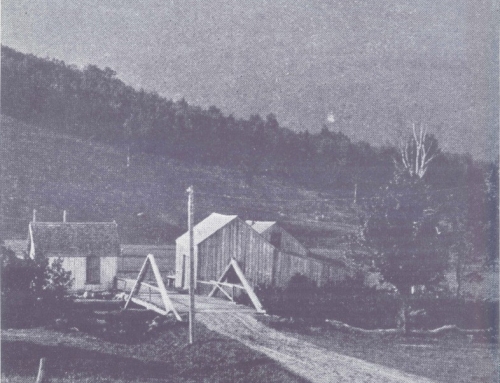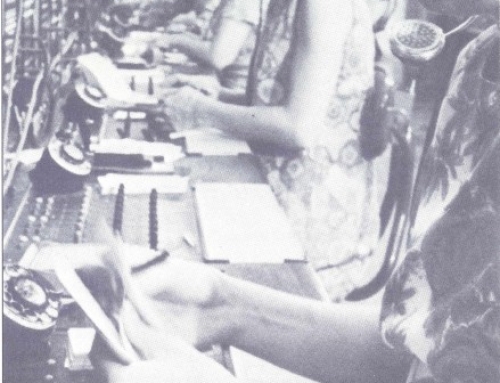Californians are used to driving on highways for free, but today free driving also means slow driving. Highway congestion is increasing in urbanized areas, and there’s not enough money to both maintain and expand existing roads. To raise funds, as well as discourage drive-alone travel, California legislators are now rediscovering the once-dreaded toll road.
In 1987 the California legislature permitted a joint-powers authority to construct toll roads in Orange County and connect them to the state highway system. Three years later, the legislature passed the AB680 bill, authorizing California State Department of Transportation (Caltrans) to test the feasibility of building four privately funded transportation facilities. More recent encouragement has come from the 1991 Intermodal Surface Transportation Efficiency Act (ISTEA), which abolished restraints against tolls on interstate facilities and allowed federal agencies to support toll roads and to participate in their financing.
Orange County, just south of Los Angeles, was ready for these changes. With population increasing by 25 percent, employment by 58 percent, number of autos by 30 percent, and vehicle miles traveled by 50 percent between 1975 and 1985, roads were congested during peak periods. However, county representatives were unable to convince the State Highway Commission of its need for additional capacity, and only four miles of new state highway were constructed between 1975 and 1985–an increase of only 2 percent. Needless to say, traffic became a nightmare, and toll roads were reluctantly proposed in 1986 as a solution. Now, five toll road–three public and two private – are under construction or being planned. (See Figure 1.)
Highway congestion is increasing in urbanized areas, and there’s not enough money to both maintain and expand existing roads.
The Transportation Corridor Agencies, three joint-powers authorities administered as one unit, control the public projects: San Joaquin Hills Corridor, a 17.5-mile road from Irvine to San Juan Capistrano; Foothill Corridor, a 30-mile freeway from San Clemente to Tustin; and Eastern Corridor, a 23-mile road linking the Foothill with Route 91 in the Santa Ana Canyon. The total estimated cost of these three roads is $2.4 billion. The Transportation Corridor Agencies are intent on building the maximum number of lanes to encourage development of surrounding lands, regardless of the environmental effects or their ability to repay construction loans. As a result, the three public roads have become highly politicized and are now mired in squabbles that jeopardize construction.
The two roads proposed by private firms are: Route 57 Extension, an 11-mile road that will be constructed as an elevated (viaduct) highway down the middle of the seasonal Santa Ana River, and State Route 91, a 10-mile road using the median of an existing freeway along the Santa Ana Canyon. Together, these two projects are expected to cost $735 million. The two private proposals will apply congestion pricing both to reduce peak-period demand and to increase revenue.
THE EXPERIMENT AS OPPORTUNITY
All five toll roads in Orange County will use automatic vehicle-identification technology, automatic toll-collection equipment, and changeable message signs to guide traffic. They thus comprise a rare, quasi-experimental setting in which transportation researchers can test some new technologies and some currently popular ideas.
In response, a group of us at UC-Irvine intends to conduct a five-year study, monitoring the actions of participating public and private organizations, the behaviors of travelers, and the workings of the highway network. Among the topics we plan to investigate are:
- travelers’ responses to pricing
- price-elasticities of demand
- values of time for various groups
- effectiveness of traffic management strategies for encouraging ridesharing
- degrees to which tolls are regressive
- capacity of private toll roads to compete with free public roads
- users’ and nonusers’ opinions of highways’ environmental consequences
- state procedures for awarding franchises for private toll roads
- potential roles of toll roads in Intelligent Vehicle Highway Systems (IVHS).
CASE IN POINT
Because the Route 91 toll road is scheduled to open in 1996, we must begin data gathering and behavioral analysis in 1993.
State Route 91 is the major link between Orange and Riverside Counties. California Private Transportation Corporation (CPTC) is now authorized to plan, construct, and operate for 35 years, four lanes within the freeway median. The four median lanes will operate like high-occupancy-vehicle (HOV) lanes. But unlike the usual HOV facility, vehicles with one or two occupants can enter only by paying tolls. Vehicles with three persons or more will travel free at first and at a discount later.
Route 91 now carries an average of 203,000 vehicles per day at the county boundary. The forecast for 2010 is 370,000. Drivers already battle severe congestion five hours each day, and the “rush hour” is expanding, as travelers shift to both sides of the peak to avoid congestion. Caltrans had planned HOV lanes for the median. They had cleared the project with environmental protection groups but had insufficient money for construction. Now, by using private funds, construction can begin sooner. Meanwhile, the state funds can be shifted to higher priority construction along the I-5 corridor.
By making excess HOV lane capacity available to toll-paying single- or double- occupancy vehicles, CITC estimates it will recoup operating and maintenance costs, as well as earn a 17 percent rate of return on investment. An additional 6 percent incentive return can be earned by increasing vehicle occupancy during peak demand periods by encouraging ridesharing and transit riding. Revenue in excess of the base and incentive return will be paid to the state as the owner of the facility.
Preliminary estimates indicate that travelers would be willing to pay a $2.50 toll during peak hours for the time saved traveling 10 miles. To encourage use of the road during non-peak hours, discounts will be offered then. As demand increases, tolls will be increased to prevent congestion in the restricted lanes. The aim is to maintain speed so that patrons save time compared to users of the unrestricted lanes. Toll charges are based on a value of the time saved, estimated at $0.20 per minute for peak-period commuters in single-occupant vehicles.
Transportation economists have long believed that higher toll rates for peak period travel could influence travel behavior. Route 91 offers an ideal opportunity to test the validity of congestion pricing as the unpriced alternative is only four feet away!
AN INVITATION
At this stage, we are eager to receive research design suggestions and supplements from colleagues in other places who wish to take advantage of this unusual research opportunity now emerging in Orange County.
We believe it’s crucial to find out how consumers respond to variable congestion prices; who uses tolled lanes, when, why, and for which trip purposes; what effects tolls have on individuals’ accessibility; how redistributive effects fall out on different population groups; and what political repercussions are generated and how they play out in the long run.
Apart from the contributions these studies might make to theory, we expect the findings will prove immediately applicable. If these toll roads prove both profitable and beneficial, they may spur other transportation agencies to sell the right to use HOV facilities. We’re therefore eager to share our locational advantage, confident that those of you in other states can both contribute to and learn from the studies here.
Accordingly, we invite interested readers to contact us with their questions, suggestions, and requests for specific data and analysis.
REFERENCES
California Legislature, Senate Bill1413, Act to Amend Section 66484.3 of the Government Code relating to subdivisions, Chapter 1402, State of California, 1987.
California Legislature, Assembly Bill 680, Statutes of 1989, adding section 143 to the California Streets and Highway Code, Chapter 107.
California State Transportation Plan Task Force, Recommended Statewide Transportation Goals, Policies, and Objectives, Sacramento: State Transportation Board, 1978.
Ward Elliot, “Fumbling Toward the Edge of History: California’s Quest for a Road-Pricing Experiment,” Transportation Research 20A, pp. 1S1-1S6, 1986.
Gordon J. Fielding and Daniel B . Klein, “How to Franchise Highways,” 1992. UCTC No. 134.
Gordon J. Fielding and Daniel B. Klein, ” Private Toll Roads: Learning from the 19th Century,” Transportation Quarterly 46: 3, pp. 321-341, 1992. UCTC No. 118.
Jose A. Gomez-Ibanez and John R. Meyer. “Private Toll Roads in the United States: The Early Experience of Virginia and California,” Taubman Center, John F . Kennedy School of Government, Harvard University, 1991.
State of California, Department of Transportation, Development Franchise Agreement: State Route 9 1 Median Improvements, Sacramento, 1991.

